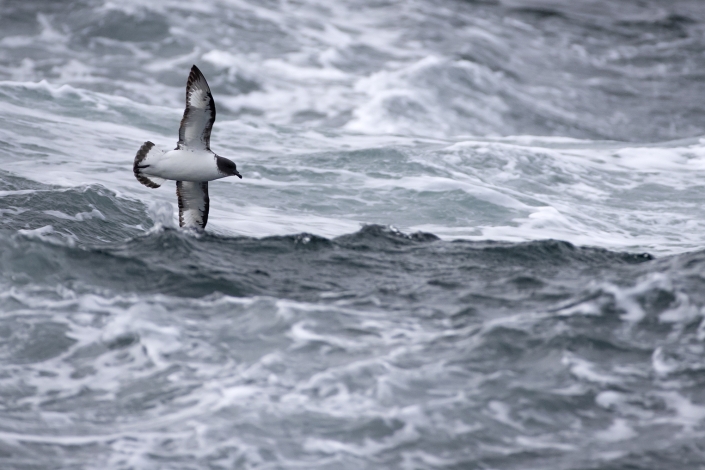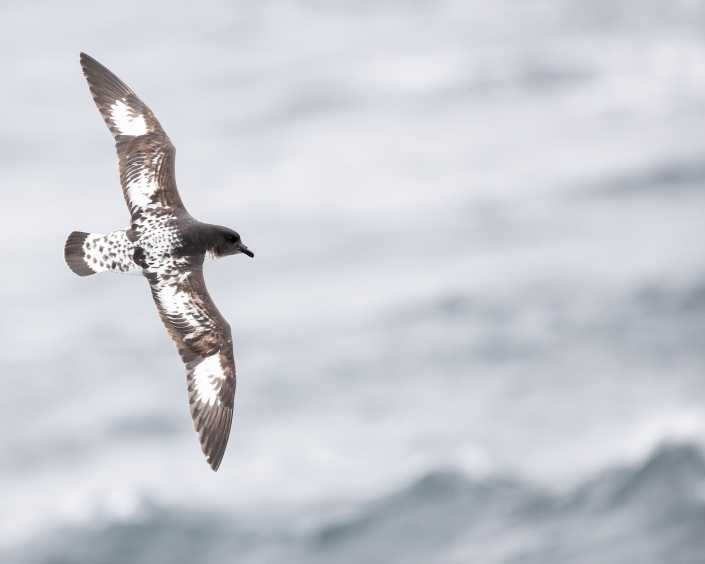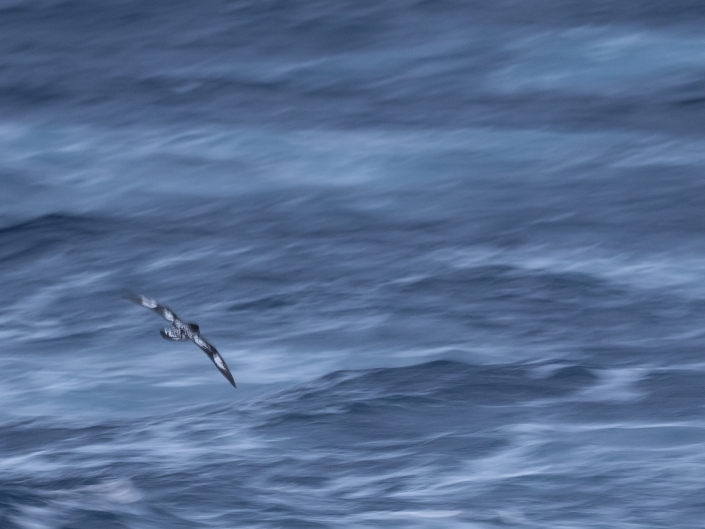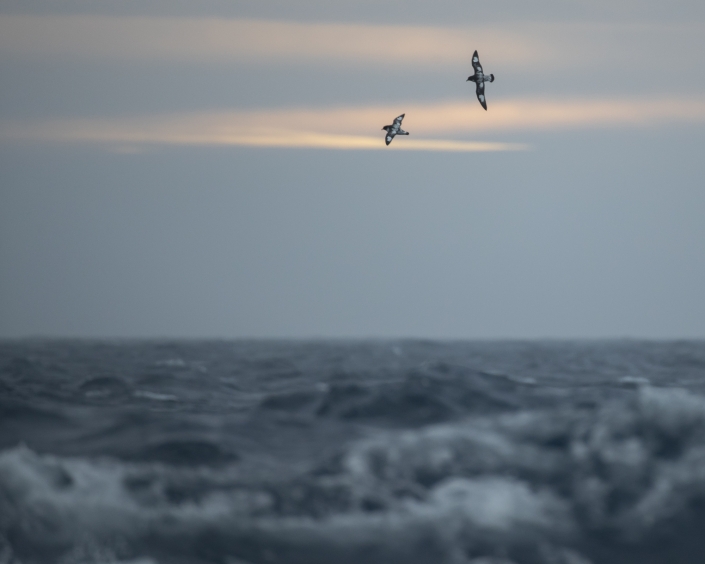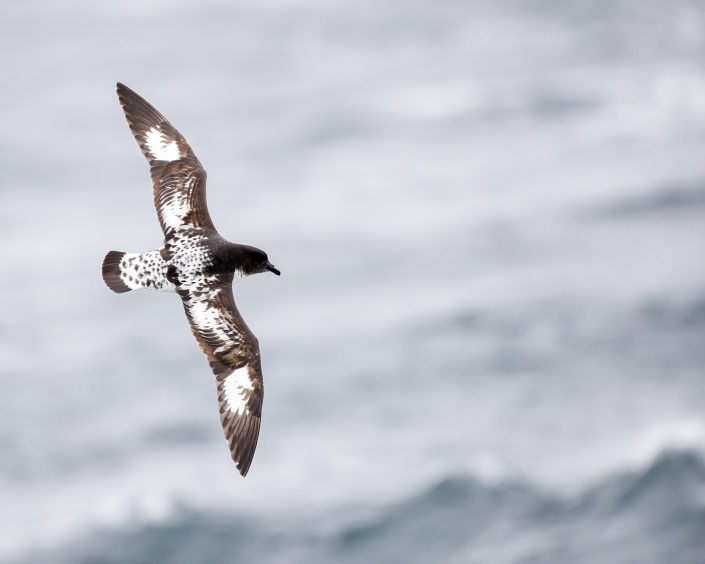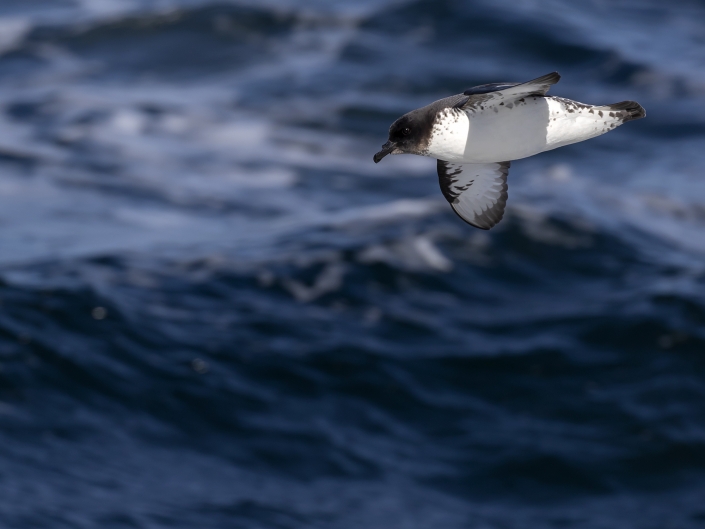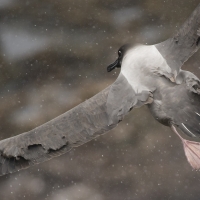This post is also available in: Swedish
The Cape petrel – Daption capense
The Cape petrel – Daption capense
also called the Cape pigeon, pintado petrel, or Cape fulmar, is a common seabird of the Southern Ocean from the family Procellariidae. It is the only member of the genus Daption, and is allied to the fulmarine petrels, and the giant petrels. They are extremely common seabirds with an estimated population of around 2 million.
The Cape petrel is the only known member of the genus Daption and is in turn a member of the family Procellariidae and order Procellariiformes. There appears to be a subgroup within the family consisting of the giant petrels, the members of Fulmarus, the Antarctic petrel, and the snow petrel.
The Cape petrel is a unique looking petrel. It has a black head and neck, and a white belly, breast, and its underwing is white with a black border. Its back, and upperwings are black and white speckled, as is its tail which also has a band of black. When fully grown, their wings span 86 cm (34 in) and they are 39 cm (15 in) long.
The Cape petrels’ diet is 80% crustaceans, as well as fish and squid. Krill is their favourite crustacean, which they obtain by surface seizing as well as diving under water and filtering them out. They are also well known for following ships and eating edible waste and carcasses thrown overboard. They are aggressive while feeding and will spit their stomach oil at competitors, even their own species.
During breeding season, Cape petrels feed around Antarctica’s shelf and during the winter they range further north, as far as Angola and the Galapagos Islands. They breed on many islands of Antarctica and the subantarctic islands, some going as far as the Auckland Islands, the Chatham Islands, Campbell Island. Their main breeding grounds were on the Antarctic Peninsula, South Georgia, the Balleny Islands, the Kerguelen Islands, as well as islands in the Scotia Sea.
Recording by Dan Lane from Xeno canto



